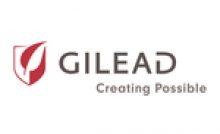Positive Results from the Second Phase III SAkuraStar Study for Chugai�s Satralizumab in Neuromyelitis Optica Spectrum Disorder (NMOSD) Published in The Lancet Neurology


- Satralizumab monotherapy significantly reduced risk of relapse in patients with NMOSD, following a previous positive study where satralizumab was added to baseline immunosuppressant therapy.
- The patient population examined in the satralizumab monotherapy study represents a broad, real-world spectrum of adults with NMOSD.
TOKYO–(BUSINESS WIRE)–#NMOSD—Chugai Pharmaceutical Co., Ltd. (TOKYO:4519) announced today that the results of the SAkuraStar Study (NCT02073279), a global phase III clinical study of satralizumab (development code: SA237) were published on April, 22 (local time) in The Lancet Neurology. Satralizumab is an anti-IL6 receptor humanized recycling antibody under development for the treatment of neuromyelitis optica spectrum disorder (NMOSD). The phase III study examined the efficacy and safety of satralizumab as monotherapy for adults with NMOSD.
Article: https://doi.org/10.1016/S1474-4422(20)30078-8
“The longer-term efficacy in satralizumab monotherapy study reinforces the important role of IL-6 inhibition in treating NMOSD following the previous combination therapy study,” said Chugai’s President and COO, Dr. Osamu Okuda. “We are collaborating with Roche to obtain global regulatory approval this year so that we can bring satralizumab as a new treatment option to patients as soon as possible.”
In the SAkuraStar Study, satralizumab significantly reduced the risk of relapse by 55% (hazard ratio=0.45 [95% confidence interval: 0.23-0.89], p=0.018 [stratified log-rank test]) in the overall population, representative of the broad real-world spectrum of NMOSD patients (including AQP4-IgG seropositive and seronegative patients), achieving the primary endpoint of time to first protocol-defined relapse in the double-blind period. Importantly, 76.1%, 72.1% and 62.8% of patients on satralizumab were relapse-free at weeks 48, 96 and 144 compared to 61.9%, 51.2% and 34.1 with placebo, respectively. In a prespecified subgroup analysis for time to relapse, hazard ratio of satralizumab to placebo in AQP4-IgG seropositive patients was 0.26 (N=64, 95% confidence interval: 0.11-0.63). The proportion of serious adverse events was similar between the satralizumab and placebo treatment groups. The most common adverse events in the satralizumab group were urinary tract infection and upper respiratory tract infection.
SAkuraStar Study (NCT02073279)
Summary:
A phase III multicenter, randomized, double-blind, placebo-controlled study to evaluate the efficacy and safety of satralizumab administered to patients with NMOSD
[Primary Endpoint]
Time to first protocol-defined relapse adjudicated by an independent review committee in the double-blind period
Study design:
- 95 male and female patients aged from 20 to 70 years were randomized.
- Patients were randomized to satralizumab or placebo in a 2:1 ratio. Satralizumab (120 mg) or placebo was subcutaneously administered at Week 0, 2, and 4. The subsequent treatment was continued at 4-week intervals.
- The double-blind treatment period ended when the total number of protocol-defined relapse (PDR) had reached 44 or at 1.5 years after the enrollment of the last patient, whichever occurred first. After experiencing a PDR or completion of the study, patients in both groups were offered treatment with satralizumab in an open-label extension period.
- Patients with AQP4-IgG seropositive or seronegative neuromyelitis optica (NMO)* and those with AQP4-IgG seropositive NMOSD were enrolled.
*NMO defined in 2006
About neuromyelitis optica spectrum disorder (NMOSD)
NMOSD is an autoimmune disease of the central nervous system characterized by inflammatory lesions in the optic nerves and spinal cord, and cause continual and significant decrease in quality of life due to permanent neurologic disorders Patients with NMOSD frequently experience a relapsing disease course with repeated attacks leading to accumulating neurological damage and disability. Symptoms may include visual impairment, motor disability, and loss of quality of life. In some cases, attacks of NMOSD result in death. Aquaporin-4 antibodies (AQP4-IgG), pathogenic antibodies, are detected in at least two-thirds of NMOSD patients. AQP4-IgG is known to target and damage a specific central nervous cell type called astrocytes, resulting in inflammatory demyelinating lesions of the optic nerve(s), spinal cord and brain 1-4. The inflammatory cytokine IL-6 is now emerging as an important factor in NMOSD pathogenesis 5-9.
Diagnostic criteria introduced in 2006 for NMO were characterized by inflammation of the optic nerve (optic neuritis) and the spinal cord (myelitis). These were revised in 2007 with the definition of NMOSD, proposed for diseases with either optic neuritis or myelitis. In 2015, the definition of NMOSD further revised to include a broader spectrum of disease. The diagnostic term NMOSD is now widely used 10.
About satralizumab
Satralizumab, created by Chugai, is an anti-IL-6 receptor recycling antibody. The drug is expected to prevent relapse of NMOSD by inhibiting IL-6 signal transduction which is deeply related to the pathology. In two global phase III clinical studies in NMO and NMOSD patients, the primary endpoint was achieved with satralizumab either as an add-on therapy to baseline immunosuppressant treatment (NCT02028884) or as monotherapy (NCT02073279). These studies represent one of the largest clinical trial programs undertaken for this rare disease. Satralizumab is designated as an orphan drug for the treatment of NMO and NMOSD in Japan, and for the treatment of the same disease group in Europe and the U.S. In addition, it has been granted Breakthrough Therapy Designation by the U.S. Food and Drug Administration in December 2018. The regulatory applications were accepted for review by EMA and FDA in 2019. The regulatory application in Japan was filed in 2019.
Sources
1. Jarius S, Ruprecht K, Wildemann B et al. Contrasting disease patterns in seropositive and seronegative neuromyelitis optica: A multicentre study of 175 patients. J Neuroinflammation 2012;9:14.
2. Lennon VA, Wingerchuk DM, Kryzer TJ et al. A serum autoantibody marker of neuromyelitis optica: distinction from multiple sclerosis. Lancet 2004;364:2106-12.
3. Marignier R, Bernard-Valnet R, Giraudon P et al. Aquaporin-4 antibody-negative neuromyelitis optica: Distinct assay sensitivity-dependent entity. Neurology 2013;80:2194-200.
4. Takahashi T, Fujihara K, Nakashima I et al. Anti-aquaporin-4 antibody is involved in the pathogenesis of NMO: a study on antibody titre. Brain 2007;130:1235-43.
5. Chihara N, Aranami T, Sato W et al. Interleukin 6 signaling promotes anti-aquaporin 4 autoantibody production from plasmablasts in neuromyelitis optica. Proc Natl Acad Sci USA 2011;108:3701-6.
6. Kimura A, Kishimoto T. IL-6: regulator of Treg/Th17 balance. Eur J Immunol 2010;40:1830-5.
7. Lin J, Li X, Xia J. Th17 cells in neuromyelitis optica spectrum disorder: a review. Int J Neurosci2016;126:1051-60.
8. Takeshita Y, Obermeier B, Cotleur AC, et al. Effects of neuromyelitis optica-IgG at the blood-brain barrier in vitro. Neurol Neuroimmunol Neuroinflamm. 2016;4(1):e311.
9. Obermeier B, Daneman R, Ransohoff RM. Development, maintenance and disruption of the blood-brain barrier. Nat Med 2013;19:1584-96.
10. Wingerchuk DM, Banwell B, Bennett JL et al. International consensus diagnostic criteria for neuromyelitis optica spectrum disorders. Neurology 2015;85:177-89.
Contacts
For Media
Chugai Pharmaceutical Co., Ltd.
Media Relations Group, Corporate Communications Dept.,
Tomoko Shimizu
Tel: +81-3-3273-0881
E-mail: pr@chugai-pharm.co.jp
For US media
Chugai Pharma USA Inc.
Casey Astringer
Tel: +1-908-516-1350
E-mail: pr@chugai-pharm.com
For European media
Chugai Pharma U.K. Ltd.
Carter Westwood
Tel: +44-20-8987-5680
E-mail: pr@chugai.eu
For Taiwanese media
Chugai Pharma Taiwan Ltd.
Susan Chou
Tel: +886-2-2715-2000
E-mail: pr@chugai.com.tw
For Investors
Chugai Pharmaceutical Co., Ltd.
Investor Relations Group, Corporate Communications Dept.,
Toshiya Sasai
Tel: +81-3-3273-0554
E-mail: ir@chugai-pharm.co.jp
Recent Posts
Shenglong Electric showcases two AI-powered products in OFC 2025 to redefine smart electricity use
SAN FRANSICO, USA - Media OutReach Newswire - 3 April 2025 - On April 1…
PolyU establishes Otto Poon Research Institute for Climate-Resilient Infrastructure with support from Otto Poon Charitable Foundation
Driving innovative solutions to tackle climate change and extreme weather challenges HONG KONG SAR -…
Hang Lung Properties and Tsinghua University Mark 15 Years of Impactful Partnership on Sustainable Urban Futures
The Hang Lung Center for Real Estate at Tsinghua University celebrates significant achievements in driving…
Galaxy Macau™ Presents: ANDREA BOCELLI Live in Concert – A Soul-Stirring Spectacle
Where Classical Majesty Met Modern Magic The “Voice of God” Ignites Galaxy Arena MACAU SAR…
Sony Hong Kong Named Official Imagery Partner for the Cathay/HSBC Hong Kong Sevens 2025
Empowering Photographers to Capture Breathtaking Moments with the Latest Camera Gears HONG KONG SAR -…
LANDMARK Hosts a One-Night Spectacle of Art, Design & Culinary Innovation
The Pioneering Collective We Are Ona, marks its second pop-up in collaboration with designer Alexandre…


